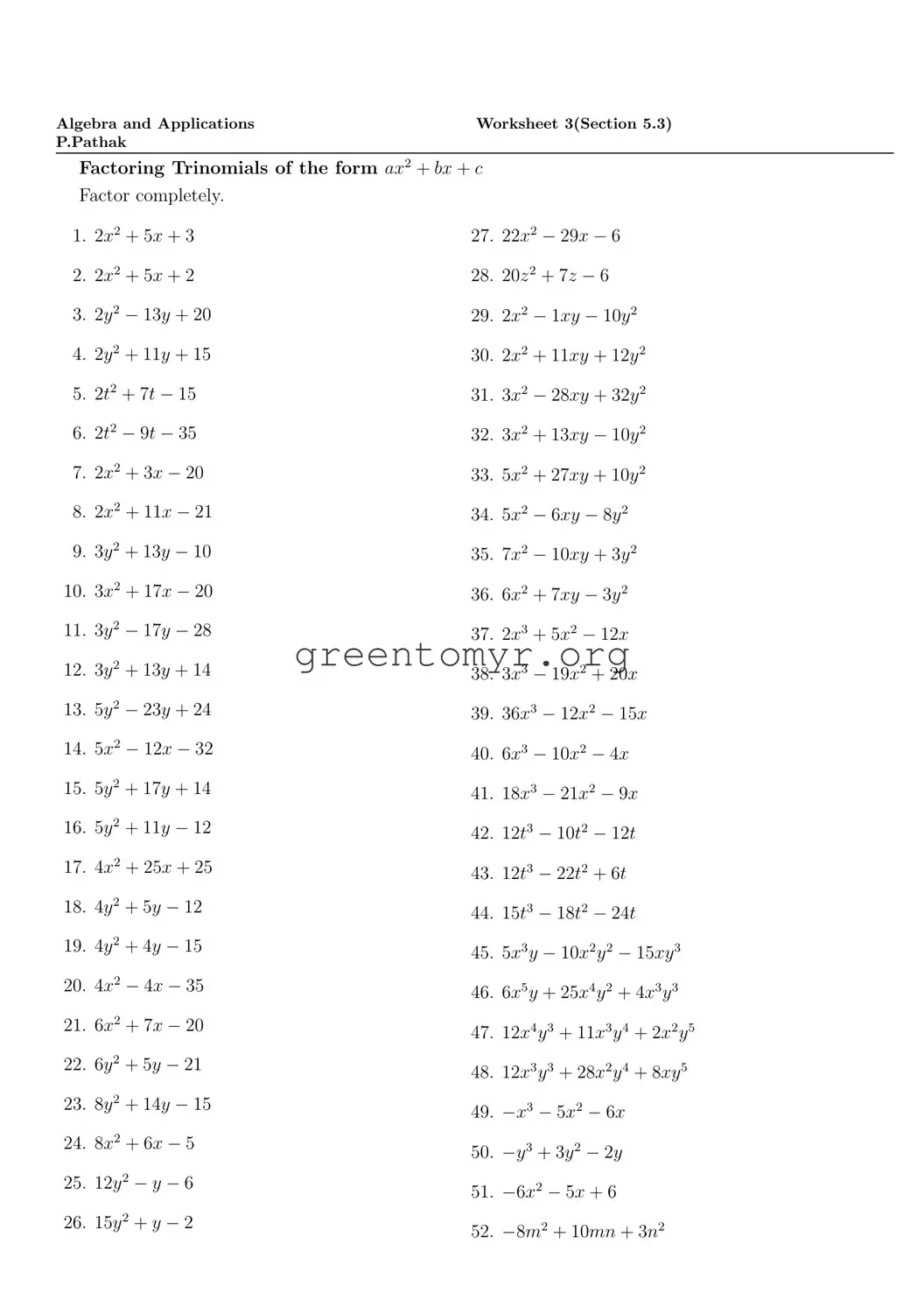Filling out the Algebra Ax2 Factoring form can be challenging, and mistakes are common. One frequent error is failing to properly arrange terms. It is vital to ensure that the polynomial is organized in the correct order, typically from highest degree to lowest. When terms are not arranged properly, it complicates the factoring process and can lead to incorrect answers.
Another common mistake involves misidentifying coefficients. Many individuals confuse the coefficients of the terms when extracting values, particularly when dealing with complex expressions. This confusion often results in incorrect calculations during the factoring process.
Some may forget to check for a common factor before starting the factoring process. Identifying a common factor in all terms can simplify the expression significantly and make factoring easier. Neglecting this step may lead to a more complicated solution than necessary.
A mistake that frequently occurs is miscalculating the product of two numbers. When factoring trinomials, it is essential to find two numbers that multiply to the product of the leading coefficient and the constant term while adding up to the middle coefficient. Errors in calculations can easily mislead the entire process.
Another issue can arise from ignoring negative signs. Many people overlook these signs when solving the equations, which can lead to entirely different solutions. It is crucial to pay attention to all signs present in the polynomial.
Additionally, some people may fail to double-check their work. Rushing through the process without reviewing the steps often results in small mistakes that can change the result completely. Taking a moment to verify calculations helps to minimize errors.
Using inconsistent variables can create significant confusion. It is important to use the same letters consistently throughout the problem. Changing variables can lead to incorrect conclusions and unnecessary complexity.
Another mistake is not writing out each step clearly. This can lead to a lack of clarity in the solving process. By clearly articulating each step taken, it becomes easier to follow the logic leading to the solution, making it less likely to overlook mistakes.
Finally, some individuals may ignore factoring completely and instead resort to other methods or guesswork. Factoring is a structured approach that, if followed correctly, leads to accurate results. Skipping this process can complicate matters further and lead to frustration.
